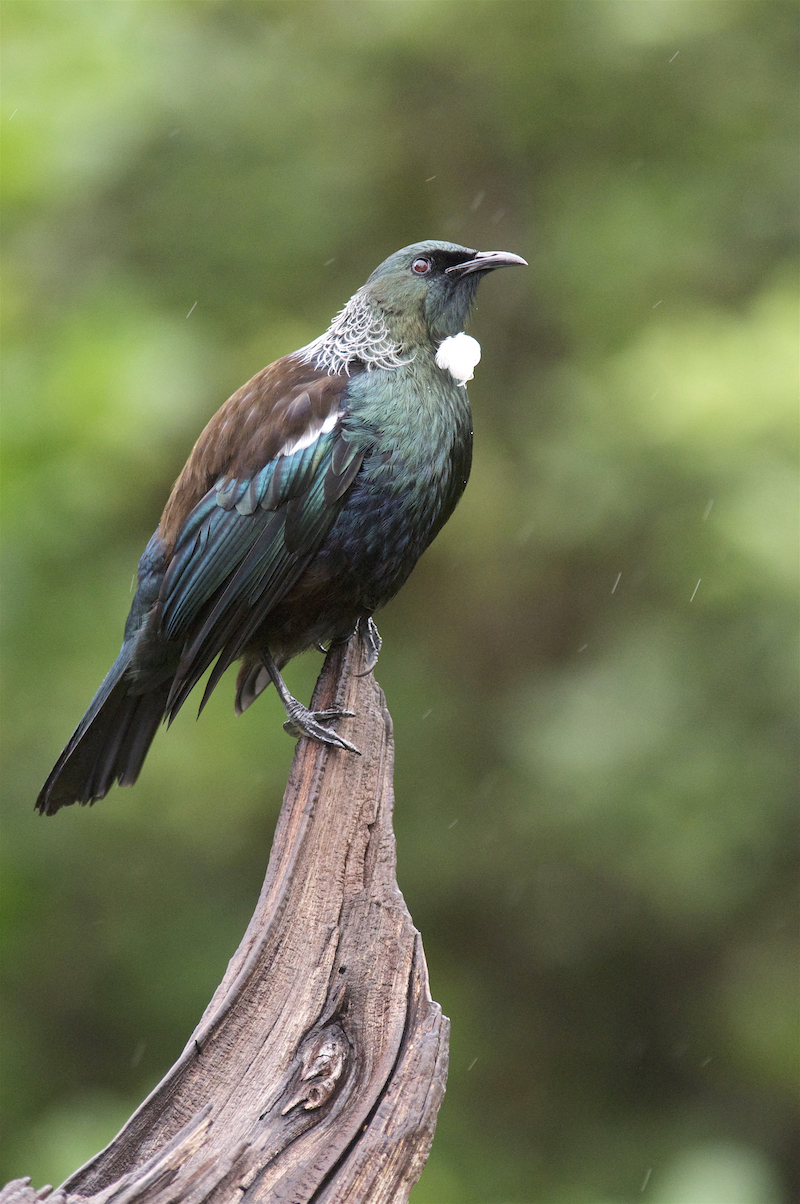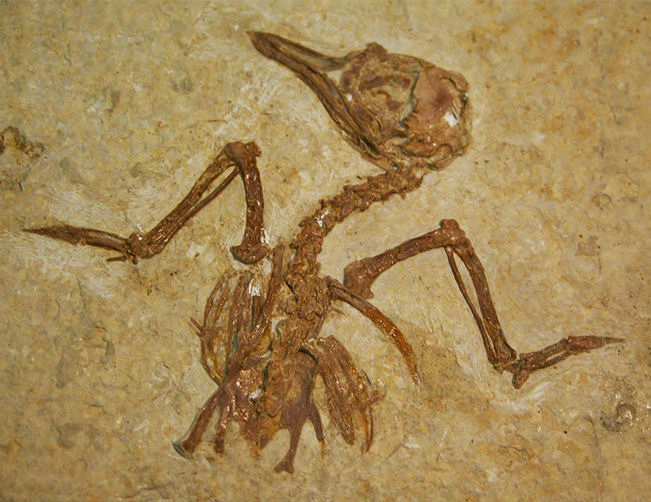The order Passeriformes—a group of birds known as passerines or perching birds, representing more than 60% of today’s bird species—originated about 47 million years ago in the South Pacific, near Australia and New Zealand. From this southern origin, these small birds—ranging today from songbird species such as canaries, to globally ubiquitous species such as sparrows—spread out to other continents. These were among the findings from an international study led by Louisiana State University (LSU) in collaboration with researchers from 10 countries, including Brazil. The results of the study are reported in a paper published April 1 in PNAS.
The team analyzed genetic material from 221 bird specimens representing all 137 families in this order, as well as 13 fossils of passerines or birds of related orders. From the resulting data they reconstructed passerine evolutionary history and pieced together a new family tree for this bird group. The study also identified a new passerine family—Hyliidae—from Africa, and confirmed the taxonomic status of six other families.

Daniel J. Field/ University of Cambridge
Tui (Prosthemadera novaeseelandiae), a bird species endemic to New ZealandDaniel J. Field/ University of CambridgeThe results from the study confirm previous studies also placing the origin of passerines in the Southern Hemisphere, typically in the vicinity of Australia or South America. But they suggest this order arose more recently, and by means of more complex evolutionary processes—which, however, remain poorly understood—than supposed by conventional wisdom in ornithology. “Our data indicate that passerines emerged 35 million years later than the prevalent estimate over the last 15 years,” says evolutionary biologist Carl Oliveros of LSU, the lead author of the study. The study also found that changes in global temperature or colonization of new continents were not the drivers of increased passerine diversification rates. “The results were surprising and indicate that other, still elusive processes were at play in the diversification of perching birds,” says Brazilian ornithologist Alexandre Aleixo, a curator at the Finnish Museum of Natural History, of the University of Helsinki, who coauthored the study. Aleixo previously worked as a researcher at the Emílio Goeldi Museum of Pará, in Belém, until early 2019.
Major geological events have historically been credited for creating environmental conditions conducive to the emergence of passerines. The event most commonly cited occurred about 82 million years ago: the geological separation of New Zealand from what was then left of the ancient supercontinent Gondwana, which incorporated present-day South America, Africa, India, Oceania, and Antarctica. The rationale was that passerines, being delicate and smaller than their more distant relatives, were able to thrive and evolve new forms in this isolated spot in the Pacific, with no land mammals and few reptiles to prey on them. One part of this narrative, however, was problematic—it was unsupported by the fossil record. Passerine fossils are rare, difficult to preserve, and the oldest are about 50 million years old.
After reconciling genetic, paleontological, and biogeographic (biogeography is the study of the geographic distribution of species) data, the new study suggests an evolutionary synthesis that points to a more recent passerine origin. “Our article is the most comprehensive there is on the order Passeriformes. I think it has left little room for discussion,” says Luís Fábio Silveira, curator of the ornithology section at the Museum of Zoology of the University of São Paulo (MZ-USP), and a coauthor of the paper. “To calibrate the time estimates from our DNA analyses, in which we found more than 4,000 ultra-conserved genomic loci among passerine families, we used only fossils that were clearly of birds of that order or of related orders.” Silveira contributed specimens of about 20 Brazilian passerine species for the study, including the Green-headed Tanager (Tangara seledon), a species found in Brazil’s Atlantic Forest.

N. Adam Smith/ Aj M. DeBee / Julia A. Clarke
A skeleton of Eozygodactylus americanus, one of the 13 passerine fossils used in the studyN. Adam Smith/ Aj M. DeBee / Julia A. ClarkeThe study ratifies what is currently the most accepted division of passerines. The oldest family of the order is thought to be Acanthisittidae, or New Zealand wrens—tiny passerines endemic to the highlands of New Zealand. This family, which is sometimes also classified as a suborder, is estimated to have emerged just 3 million years ahead of the other two ancient passerine suborders, both of which originated 44 million years ago: Tyranni, which comprises more than 1,000 species, the large majority of which are currently found in South America, including great kiskadees, neotropical bellbirds, and musician wrens; and Passeri, a suborder containing roughly 4,000 species well distributed across the globe, such as thrushes and siskins. The more than 6,000 species of birds now extant on Earth descended from these three ancestral groups.
Earth’s first birds, as the fossil record and numerous scientific papers have now confirmed, were a lineage of dinosaurs more than 150 million years ago. The evolutionary process by which these feathered dinosaurs evolved into the graceful birds found in nature tens of millions of years later is still poorly understood. “We plan to work with ornithologists from around the globe to develop further-refined studies on bird relationships at the species and genus level as part of our OpenWings project,” says Brant Faircloth, an ornithologist at LSU, who led the international effort reported in PNAS.
Project
Systematics, taxonomy, and biogeography of neotropical birds: Cracidae as a model (nº 07/56378-0); Grant Mechanism Regular Research Grant; Principal Investigator Luís Fábio Silveira (MZ-USP); Investment R$86,928.28.
Scientific article
OLIVEROS, C. H. et al. Earth history and the passerine superradiation. PNAS. Apr. 1, 2019.


